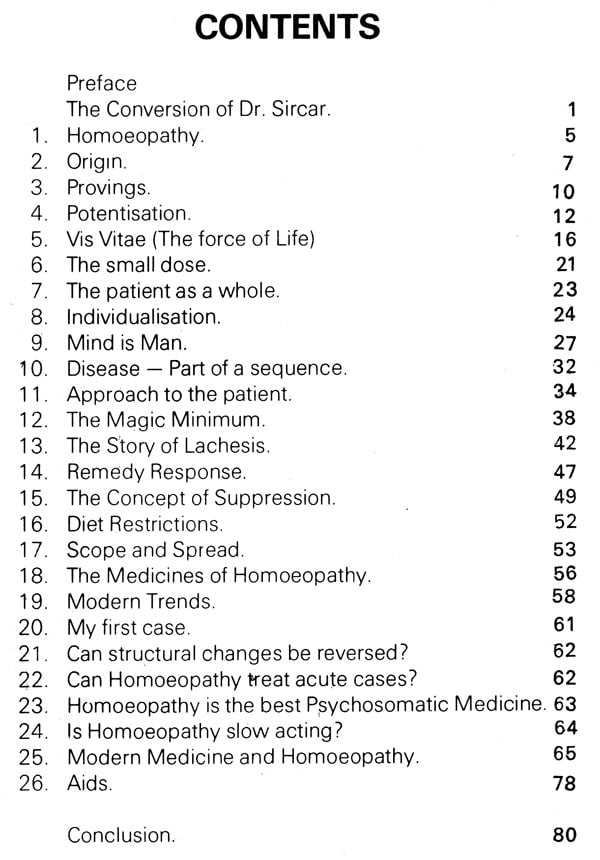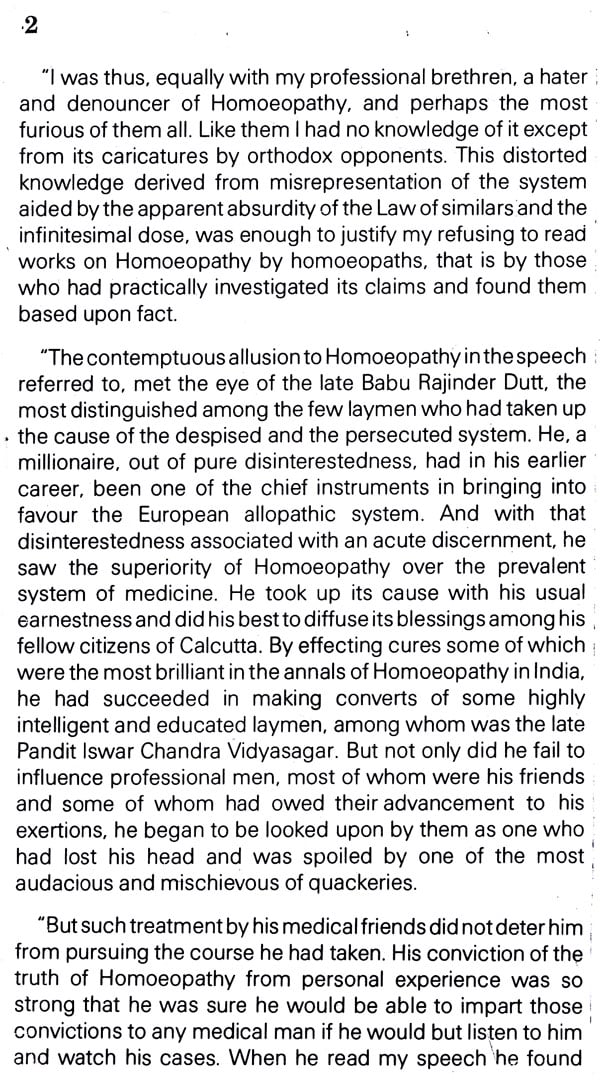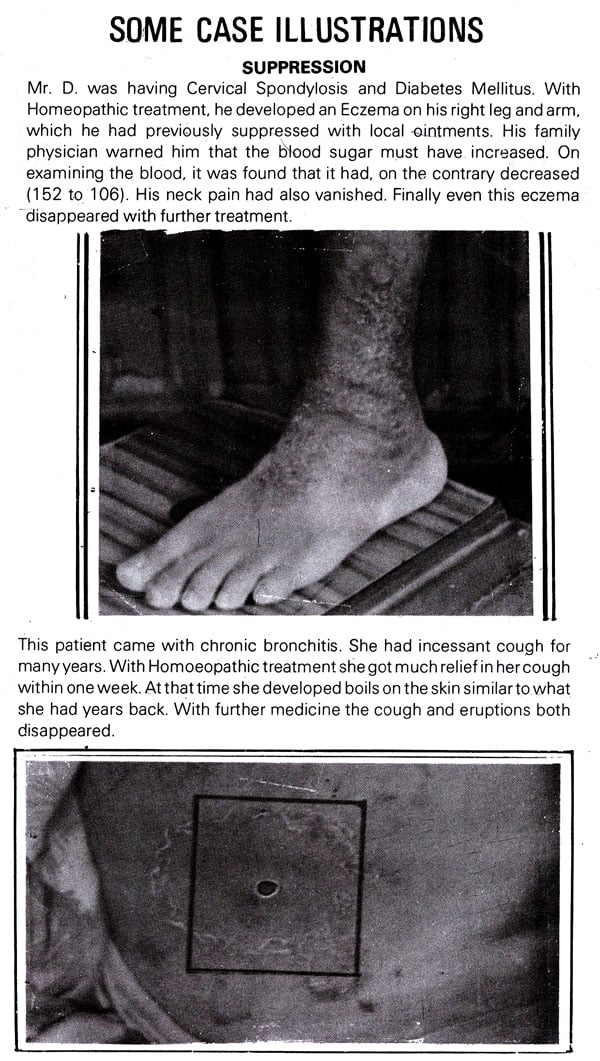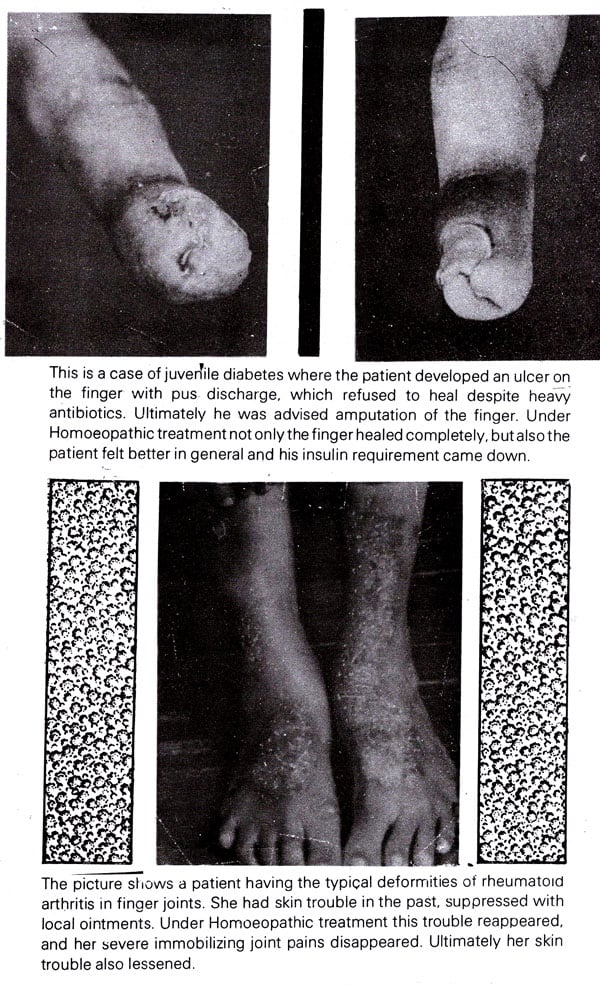
Homeopathy - The Science of Healing
Book Specification
| Item Code: | NAS736 |
| Author: | Rajan Sankaran |
| Publisher: | B. Jain Publishers (P) Ltd |
| Language: | ENGLISH |
| Edition: | 2017 |
| ISBN: | 9788131907511 |
| Pages: | 104 (45 B/W Illustrations) |
| Cover: | PAPERBACK |
| Other Details | 8.50 X 5.50 inch |
| Weight | 150 gm |
Book Description
Dr. Rajan Sankaran was born on May 24, 1960 in Mumbai, inspired and Cultured by his father, Dr P. Sankaran. He is a Gold medalist from Bombay Homoeopathic Medical College. He is the assistant professor in the Department of Repertory in C.M.P. Homoeopathic Medical College, Mumbai. He is the Editor of the Asian edition of the Homoeopathic Links and is also the vice chairman of the International Council for Classical Homoeopathy. He has worked to unearth the system of Homeopathy that gives consistent results.
"Read not to confute or contradict nor to believe or take for granted, but to weigh and consider-
-Lord Byron
The advent of the antibiotics and the steriods was a 'revolution in Medical history. Priorto this, medicine was based on empirical theories and ignored scientific experimentation. With antibiotics, deaths from infectious diseases considerably reduced. However, soon the side-effects of the antibiotics became evident. Steroids have proved to be amongst the most harmful drugs. Presently the infectious diseases were replaced by more disabling conditions. Now we see a significant increase in the incidence of Heart diseases, Tumours, Diabetes, Hypertension, Renal failures, Allergic conditions like Asthma, Degenerative disorders and also Psychic and Psychosomatic diseases. Modern medicine is able to now pinpoint the illness but often can do very little besides that. For many of these diseases it offers only excuses, not solutions. One reason for this is that modern medicine lacks a common principle or law governing the treatment of the patient. This is covered up by a spate of palliative and often harmful drugging. In this situation, Homoeopathy comes forward and offers the answer.
Homoeopathy is neither a supposition nor a theory. It is a scientific principle hammered out of hard facts. It is a proven law backed by indisputable logic. It is the outcome of genius and years of painstaking work. Instead of fading with time, it grows stronger with clinical successes. Hahnemann, the founder challenged, "Homoeopathy appeals solely to the verdict of experience Repeat the experiment, carefully and accurately and you will find the doctrile confirmed at every step. Homoeopathy insists on being judged by the results".
Following Hahnemann, homoeopaths have practised their art silently and the results have spoken loudly and unequivocally. The system has become popular. As the fame spreads people are becoming curious. Even doctors practising other systems are showing active interest. The layman, the patient and the doctor now press for an explanation of the principles of Homoeopathy in the light of recent developments in science and medicine.
Ide3s presented in this book are not novel. This work is like a necklace of pearls. The pearls are from the stalwarts from Hahnemann down to the present generation. The author has only contributed the connecting thread. An attempt has been made to cover all aspects of Homoeopathy.
If this book evokes an interest to go deeper into the fascinating ocean of Homoeopathy, it would have more than served its purpose.
-Rajan Sankaran
It gives me a very great pleasure in writing the foreword for "Homoeopathy, the Science of Healing". Dr. Rajan Sankaran, who has been one of the most brilliant students who have passed out from Bombay Homoeopathic Medical College, has in a short period of his practice made his mark in the profession. He has inherited the quality of his great father, Dr. P. Sankaran who was a great friend of mine. I see in this book glimpse of my late friend and I am happy that he continues 'to live in his capable young son. Dr. Rajan Sankaran has, in his small book-, tried to give the basics of Homoeopathy and has covered practically all aspects of the science and art of Homoeopathy. He has cited a few interesting cases and has given extensive quotations from renowned authors to make his point. As he himself has written in the preface, that it is not something very original that-he is writing about but he has collected together the facts and figures and has put them together as he understands which could be presented to the profession especially the young entrants to the profession. His style and writing is refreshing and I am quite sure that students of Homoeopathy anywhere in the world would appreciate this presentation.
His /style of presentation of a difficult subject like Homoeopoathic philosophy is quite lucid and can be understood by lay people. The author has dealt quite competently the doubts and questions usually asked by the public and young students of Homoeopathy. For example, misconceptions about role of Homoeopathic treatment in acute diseases or conditions, its application in sickness where structural changes have taken place, its scope and limitations in general have been elucidated beautifully. Dry Homoeopoathic philosophy has been enlivened with interesting clinical examples. Homoeopathic philosophy should be presented in our institutions as part of clinical subjects and, therefore, has to be integrated in both indoor and outdoor departments of our hospitals: I think that this book should be in all libraries of our colleges and form part of introductory lectures on Homoeopathic philosophy and Organon.
**Contents and Sample Pages**










